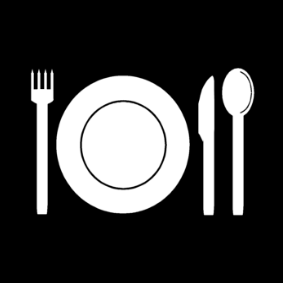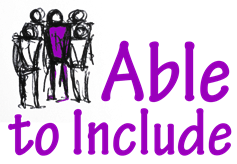Description – easy to read
 The University of Leuven is a partner
The University of Leuven is a partner
in the Able to Include Project.
Leuven is a city in Belgium.
The University of Leuven made a computer program
to change words into pictures.
This program will help people with intellectual disabilities
better understand the information they are reading.
It will also help them use social media
like Facebook, Twitter or WhatsApp.
They are using two picture languages:
-
one is called Beta
-
and the other one is called Sclera
Beta pictures are in color. They look like this: 
Sclera pictures are black and white, like this: 
In some countries, students learn these picture languages in school.
Description
In order to ease the understanding of text based communications, pictograms incorporate a visual layer to transmit information. A large proportion of people with IDD require this type of communication layer. There are estimates that between 2 and 5 million people in the European Union could benefit from symbols or symbol-related text as a means of written communication (Keskinen et al. 2012). Pictograms are standardized image based representations of words or concepts that serve people with reduced speech or reading capabilities to express themselves or understand written texts.
The technology Text2Picto, co-developed by partners KU Leuven and TM, provides a text-to-pictogram and a pictogram-to-text translation assuring an intuitive communication between IDD users and the rest of the society. It also allows translation between different sets of pictograms. This technology, especially when applied in combination with the text simplification tool, is able to reduce cognitive complexity of tasks such as reading work documents, emails, web pages, chats, etc.
The technology maps text onto pictograms. The simplest version uses part-of-speech tagging to partially disambiguate between homonyms (different words with the same spelling), and uses lemmatisation to improve the coverage of the pictogram lexicon, by mapping word forms onto their lemmas. This system has been developed for Dutch and for the Beta and Sclera pictogram lexicons. Localisation of this version that will be used also in the pilots in Spain and UK will require the translation of the pictogram lexicon into the target language, or the use of a pictogram lexicon in the local language. Beta and Sclera pictograms are already available in English and Spanish, as well as part-of-speech taggers and lemmatizers.
As not all pictogram sets are organized around one pictogram per word, the simple approach is not fully satisfactory, as the coverage is too low. For instance, Sclera pictograms are often representing a verb and its object in one pictogram (e.g. feed the dog)
To allow the translation of text into such complex pictograms, the pictograms have been mapped onto Cornetto, a lexico-semantic database for Dutch which is linked to the WordNet grid.
On top of the coverage of the simple approach, this approach also covers the conversion of synonyms and hypernyms (for instance, if the word Labrador occurs in a text, and there is no pictogram, the pictogram for the hypernym dog will be shown).
The localisation of this approach requires the mapping of the selected pictogram sets onto the synonym sets of the wordnets of these languages. Within the project, we will be using the Open Multilingual Wordnet which maps wordnets of 20 different languages, and the Eurowordnet. Both are open source and included in the Global Wordnet project.
Users of the Able to Include services, including the Text2Picto service, should note they are covered by the following FRAND policy adopted by KUL its Service Provider.
Third-party beneficiaries of the Able to Include FRAND policy, are entitled to expect that each Able to Include Service:
- Is provided and used only on an “As Is” basis, without warranties or conditions of any kind, either express or implied, unless required by applicable law or agreed to in writing.
- Will continue to be thus provided for at least 2 years after the Able to Include project ends.
- Is provided on a fair, reasonable and non-discriminatory basis to all users who wish to use it.
- The service is available free for Partners’ research, training and private use.
- Commercial and external research users’ fees for use of the service will be based on rates that:
- Provide the Service Provider with an adequate incentive to be able to continue investing and contributing to the service in future time periods.
- Are based on a common approach,
- Are not anti-competitive and are reasonable even if no other alternative similar service exists.
- Documentation, support and communications with the Service Provider is through https://able-to-include.ccl.kuleuven.be only.
Documentation
Described in D3.1 “Report on the integration of Wai-Not in the Accessibility Layer”, at Public Documents)
Demo
Try out our Text 2 Picto tool here.
